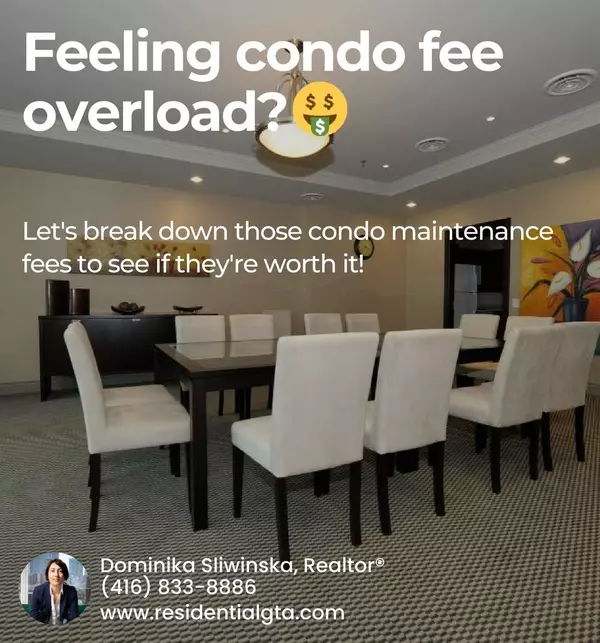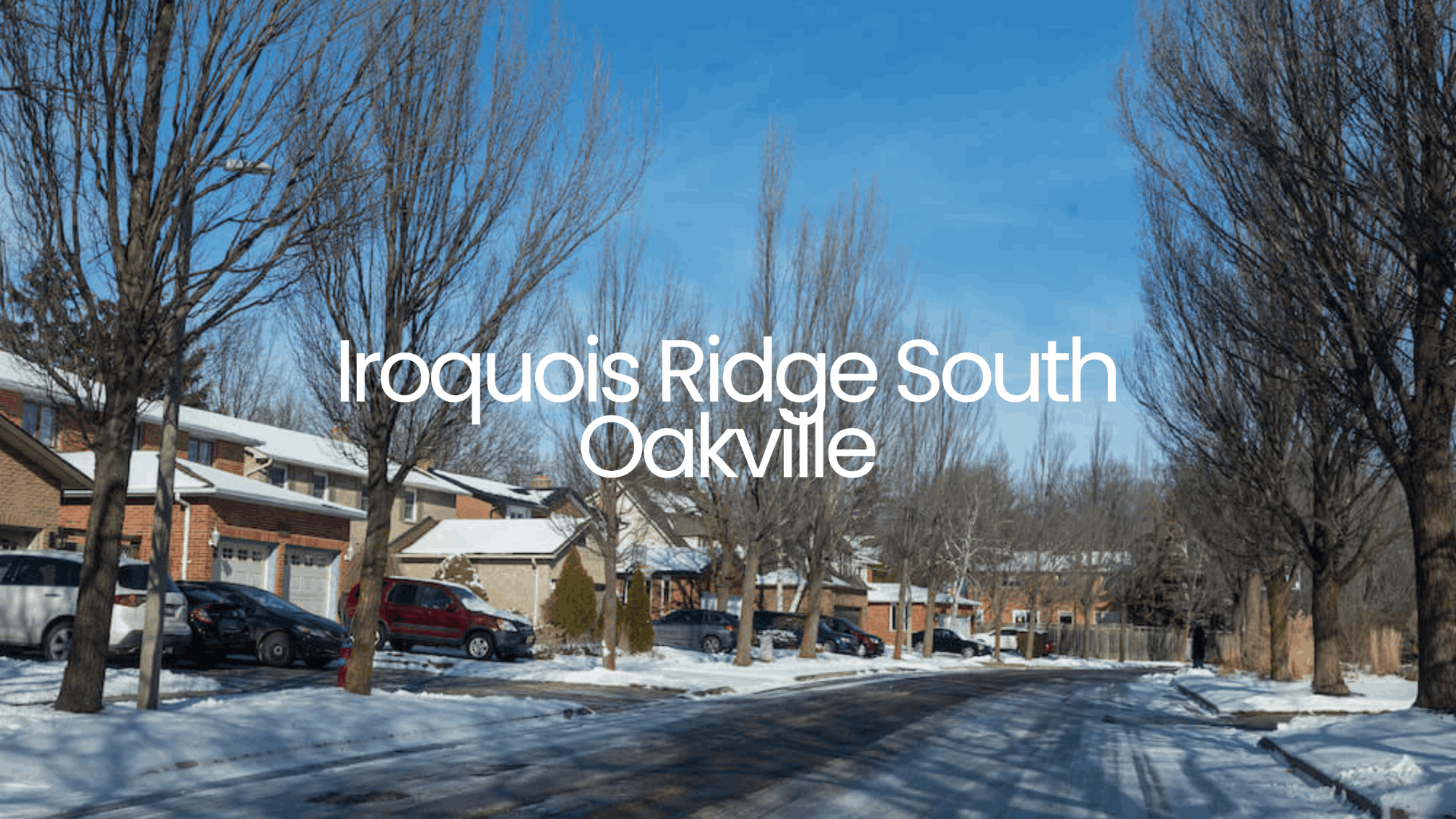
Maximize Your Upsize: How to Find the Perfect Home in the Suburbs
Moving from a condo in the heart of Toronto to a serene suburban house can be an exciting yet challenging journey. This guide will help couples smoothly transition from urban living to suburban bliss, focusing on how to make the most of your upsize. From Urban Jungle to Suburban Bliss: Key Factors to Consider When Upsizing Your Home Understanding Your New Lifestyle Needs When moving to the suburbs, it's essential to think about how your lifestyle will change. Suburban living often means more space, quieter surroundings, and a sense of community. Here are some factors to consider: - Commute Time: Make sure to consider how the move will impact your daily commute. Living further from the city center usually means longer travel times, so planning is crucial. - Amenities and Services: Research the local amenities such as schools, parks, grocery stores, and healthcare services. Make a checklist of essential amenities you'll need for your day-to-day life. - Community Vibes: Pay attention to the sense of community. Suburban areas often have local events, neighborhood gatherings, and community centers, which can be a significant change from the city’s bustling life. Evaluating Home Features When upsizing, you’ll have more room to think about specific features you desire in your new home. Here are some elements to consider: - Bedrooms and Bathrooms: Consider your current and future needs. Planning to have children or expecting guests regularly? Ensure there are enough bedrooms and bathrooms. - Outdoor Space: One major advantage of moving to the suburbs is the potential for a yard. Think about how much outdoor space you need for gardening, pets, or recreational activities. - Storage Space: Look for homes with ample storage options. Basements, attics, and garages provide additional space that condos in the city often lack. Steps to Find the Perfect Suburban Home Define Your Budget Understanding your financial situation is the first step in finding your dream home. Here's how to do it: - Evaluate Your Finances: Calculate your total income, debts, and savings to understand how much you can afford to spend on a new home. - Get Pre-Approved for a Mortgage: Before you start house hunting, get pre-approved for a mortgage. This will give you a clear picture of your budget and make you a serious buyer in the eyes of sellers. - Factor in Additional Costs: Don't forget to budget for additional expenses such as property taxes, insurance, and maintenance costs. Choose the Right Suburb The next step is choosing the perfect suburb. Here’s how to narrow down your options: - Research Suburbs: Start by researching various suburbs to understand their unique features and benefits. Look into crime rates, school quality, and the overall vibe of each area. - Visit Neighbors: Spend time visiting potential neighborhoods at different times of the day. This will give you a good feel for the area and help you determine if it fits your lifestyle. - Talk to Locals: Engaging with current residents can provide valuable insights into the neighborhood’s pros and cons. Create a Must-Have List Knowing what you want in a home is critical for narrowing down your options. - Essential Features: Make a list of features that are non-negotiable, such as the number of bedrooms, bathrooms, and the type of layout. - Desirable Features: Include features you’d like but can live without if necessary, such as a pool, modern kitchen, or finished basement. - Compromise Areas: Acknowledge areas where you're willing to be flexible. This approach will help you keep an open mind and not miss out on otherwise perfect homes. Partner with a Local Real Estate Expert Working with a knowledgeable real estate agent can make the process smoother. - Find a Local Agent: Choose an agent who specializes in the suburbs of Toronto. They will have in-depth knowledge of the area and can guide you through the market nuances. - Communicate Your Needs: Be clear about what you’re looking for. An experienced agent will use this information to find homes that match your criteria. - Attend Viewings: Your agent can set up viewings and accompany you to provide expert advice on each property. Conduct Thorough Inspections Once you find a potential home, it’s essential to conduct detailed inspections. - Hire a Professional Inspector: They can identify any structural issues, potential repairs, and help you understand the home’s overall condition. - Review Inspection Reports: Carefully review inspection reports to decide if the home is a wise investment or if you need to renegotiate the price based on the findings. Make an Informed Offer When you find the right home, the next step is to make an offer. - Consult Your Agent: Your real estate agent can help you decide on a competitive yet fair offer based on market conditions and comparable sales. - Include Contingencies: Ensure your offer includes contingencies for financing, inspections, and appraisals to protect your interests. - Negotiate: Be ready to negotiate terms with the seller to reach a mutually agreeable deal. Plan Your Move Once your offer is accepted, it’s time to plan your move. - Hire Professional Movers: Choose a reputable moving company to handle your belongings with care. - Prepare for Transition: Plan the logistics of your move, such as packing, notifying service providers, and updating your address. - Settle In: Take time to familiarize yourself with your new home and neighborhood. Attend local events and get to know your neighbors to feel more at home. By carefully considering all aspects and taking actionable steps, couples can successfully transition from a condo in Toronto to a beautiful house in the suburbs, maximizing their upsize and enjoying their new lifestyle to the fullest.

Space Upgrade: How to Efficiently Plan and Organize Your Move from Condo Living to a Spacious House
Moving from a cozy condo in the bustling city of Toronto to a more spacious house in the suburbs is a big step. This transition requires careful planning and organization to ensure a smooth and successful move. Here’s your detailed guide to making this space upgrade as seamless as possible. The Ultimate Space Upgrade Checklist: Essential Steps to Transition from Condo to House Seamlessly 1. Assessing Your Needs and Wants Before you start packing, it's important to figure out what you want and need in your new house. Take some time to think about:- Space Requirements: Do you need extra rooms for a home office, a nursery, or a guest bedroom?- Location Preferences: Consider the proximity to schools, parks, public transportation, and your workplace.- Lifestyle Needs: Are you looking for a big backyard, a quiet neighborhood, or amenities like a swimming pool or gym? By understanding your needs and priorities, you can narrow down your choices and focus on finding a house that fits your lifestyle. 2. Budget Planning Moving can be expensive, so it's crucial to set a budget early on. Think about:- Down Payment and Mortgage: Determine how much you can afford to spend on your new house. Get a pre-approved mortgage to know your budget range.- Moving Expenses: Include costs for hiring a moving company, packing materials, and any DIY moving costs.- Settlement Costs: Don't forget legal fees, home inspection costs, and any immediate renovations or repairs once you move in. Having a clear budget helps avoid any financial surprises and keeps your move stress-free. 3. Decluttering and Downsizing One of the perks of moving is the chance to declutter. Go through your condo room by room and decide what to keep, donate, or discard. Follow these tips:- Sort and Categorize: Create piles for items to keep, donate, and throw away. - Sell Unneeded Items: Consider holding a garage sale or selling items online through local marketplaces.- Donate: Many organizations will accept gently used furniture, clothes, and household items. 4. Hiring Professional Help Hiring the right professionals can make a world of difference.- Real Estate Agent: Find a real estate agent who specializes in helping couples find homes in the suburbs. They can provide vital insight into the housing market and help you find the perfect home.- Moving Company: Research and hire a reputable moving company. Look for companies with good reviews and obtain quotes from several before making your decision.- Home Inspector: Always get a home inspected before buying. A professional can identify any potential issues that may not be visible to the untrained eye. 5. Packing Smart Packing can be overwhelming, but using a systematic approach can make things easier:- Start Early: Begin packing non-essential items a few weeks before your move. Seasonal clothes, books, and decor can be packed early.- Label Boxes: Clearly label each box with its contents and the room it belongs to in your new house.- Organize by Priority: Pack items you’ll need immediately in your new home in a separate "Open First" box. 6. Transitioning Utilities and Services Ensure all your utilities and services are ready before you move in:- Electricity, Gas, Water: Arrange for the transfer or setup of essential utilities in your new home.- Internet and Cable: Schedule the installation of internet and cable services, so you're not without connectivity.- Mail and Subscriptions: Update your mailing address for subscriptions, bank accounts, and any other services. 7. Planning Your Move-in Day Move-in day can be chaotic, so having a plan is essential:- Timeline: Create a timeline for move-in day. Schedule when the movers will arrive, the order in which items will be moved, and any additional tasks that need to be done.- Essentials: Pack a bag with essentials like personal documents, toiletries, a change of clothes, and snacks.- Safety First: Make sure pathways are clear and safe for movers to prevent any accidents. Making Your New House a Home After moving in, it's time to make your new house feel like home:- Unpack Strategically: Start with essential rooms like the kitchen and bedrooms. This ensures you have a functional space to eat and sleep.- Set Up Utilities and Appliances: Ensure all appliances are connected and working. Check if your heating/cooling systems and security systems are functional.- Personal Touches: Add personal touches like family photos, favorite decor items, and comfy furnishings to make your new house feel homey. Final Thoughts Moving from a condo in Toronto to a house in the suburbs is a major life change, but with careful planning and organization, the process can be smooth and enjoyable. By assessing your needs, setting a budget, decluttering, and hiring the right professionals, you’re well on your way to enjoying more space and a new lifestyle. Happy moving!

Debunking Myths: Why A 20% Down Payment Might Not Be Necessary
Buying a home, especially in a bustling city like Toronto, can be daunting. Many budget-conscious renters feel overwhelmed by the notion that they need a 20% down payment to get started. However, this common belief isn't always true. Let's unpack the myths surrounding the 20% down payment and explore other viable options for first-time homebuyers. The Hidden Costs of a 20% Down Payment You’ve probably heard that a 20% down payment is the golden rule for buying a house. But what if you don’t have 20% saved up? It turns out, focusing on that large down payment can actually be more costly and stressful than it's worth. Immediate Financial Stress Saving up 20% of a home's price can take years, especially in a pricey market like Toronto. Let's assume you're looking at a $600,000 home. That’s $120,000 you need to save. While you’re busy saving, house prices might go up, and you’re still paying rent. The Opportunity Cost While trying to save that large amount, you might miss out on getting into the market sooner. Real estate values generally go up over time, so delaying your purchase can mean paying more later on. Alternative Options Instead of stressing about saving 20%, explore these alternatives: 1. 5% to 10% Down Payments: Many first-time buyers qualify for mortgages with as little as 5% to 10% down. For that same $600,000 home, that's between $30,000 and $60,000—a much more attainable goal. 2. Government Programs: In Toronto, there are several government programs designed to help first-time homebuyers. For example, the First-Time Home Buyer Incentive program can provide part of the down payment in exchange for a shared equity in the home. The Reality: Lower Down Payments are Common Many people think paying less than 20% means you can’t get a mortgage, but that's far from the truth. Banks and other lenders offer various options for lower down payments. Mortgage Insurance If you put down less than 20%, you'll likely need to pay for mortgage insurance through the Canada Mortgage and Housing Corporation (CMHC), Genworth, or Canada Guaranty. While this adds a small monthly fee, it often allows you to buy a home quicker than if you were saving for a 20% down payment. Flexible Lenders Many lenders are willing to work with first-time buyers offering less than 20%. It’s a competitive market, and lenders want your business. Speak with multiple banks and mortgage brokers to find the best deal that fits your financial situation. Benefits of a Smaller Down Payment Paying less upfront doesn’t just make it easier to get into the market quicker; it also has other advantages. Financial Flexibility Saving for a smaller down payment allows you to keep more money accessible for other needs. Whether it's emergencies, investments, or simple day-to-day expenses, having a lower down payment lets you hold onto more of your cash. Faster Entry to the Market As mentioned earlier, getting into the market sooner can be beneficial when property values are rising. Once you own property, you can build equity faster and potentially avoid higher prices later on. Actionable Steps for First-Time Buyers Ready to move forward? Here’s a step-by-step guide to help you get started: 1. Evaluate Your Finances: Review your current savings, income, and expenses. Determine how much you can realistically save for a down payment. 2. Research Lenders: Look at different banks, credit unions, and mortgage brokers. Ask about options for down payments of less than 20%. 3. Explore Government Programs: Check out programs like the First-Time Home Buyer Incentive. These can significantly reduce the strain of a down payment. 4. Get Pre-Approved: Before house-hunting, get pre-approved for a mortgage. This helps you understand exactly how much you can afford and makes your offers more credible to sellers. 5. Consult a Real Estate Expert: Work with a knowledgeable real estate agent who specializes in helping budget-conscious buyers in Toronto. They can offer insights and help you find the right property at the right price. Real-World Example Let's look at Emma, a budget-conscious renter in Toronto. Emma found a cozy condo for $400,000 but only had $20,000 saved. Through diligent research, she discovered she could qualify for a mortgage with a 5% down payment. After securing a mortgage and paying mortgage insurance, Emma became a homeowner, enjoying the benefits of her own property much sooner than she expected. Conclusion The myth of the 20% down payment can deter potential homebuyers, but in reality, lower down payments are a viable and often smarter option. By understanding the hidden costs of a large down payment and exploring alternatives, budget-conscious renters in Toronto can achieve their dreams of homeownership without unnecessary stress. Take the first steps today, and consult experts who can guide you through the process. Your dream home may be closer than you think.
Categories
Recent Posts
































































